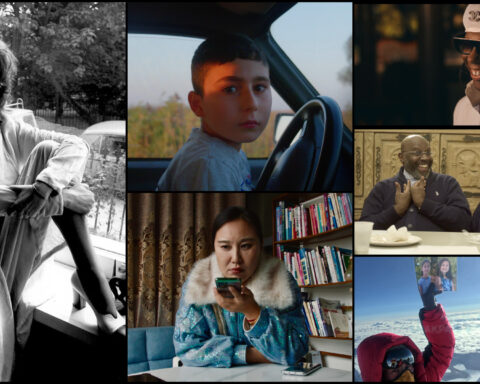Kifaru
(USA/Kenya, 79 min.)
Dir. David Hambridge
Programme: Animal Magnetism (International Premiere)
This year’s edition of Hot Docs features a great theme programme called Animal Magnetism. It’s a series of docs that allows audiences to walk and talk with the animals, enjoy companionship with four-legged friends, and feed the hunger for furried non-fiction that’s been aching since the release of Kedi far too long ago. The wonderful series draws upon many themes via accessible approaches. Most significantly, Animal Magnetism is a shrewdly programmed spotlight of environmental films. The docs in the selection engage with the relationships between humans and non-human animals, and the responsibility we have to the creatures with whom we share this earth. The best example of this relationship comes in the series’ standout film Kifaru, a film every animal lover needs to see.
If you ever wanted to glimpse a northern white rhinoceros, either get yourself to Kenya as fast as possible or catch a screening of Kifaru. This strong and unexpectedly moving doc by David Hambridge gives audiences the unique privilege of witnessing the final days of Sudan, the last male northern white rhino to walk this earth. Few, if any, films have captured the problem of extinction as effectively as Kifaru has. Hambridge chronicles the species’ journey over the edge of functional extinction as the cameras go intimately within Kenya’s Ol Pejeta Conservancy as Sudan’s keepers cherish his last days, as well as those of his species. It’s a sad and quietly effective call to action.
Kifaru doesn’t anthropomorphise its central subject and that’s what makes it so compelling. Hambridge treats Sudan as an animal first and foremost while giving equal care to the stories of the humans who are his guardians. The film focuses on Sudan’s keepers, Jacob, Jojo, and James, who tend to the remaining northern white rhinos. They are the humans, while Sudan and his friends are the animals. The divide is clear: one species has the ability to choose its actions. Kifaru isn’t a doom and gloom environmental film, nor is it a picturesque wildlife movie. It documents the last chapter of a living testament to human greed and consumption, as Sudan’s keepers devote themselves to correcting a hunger that seemingly knows no end.
The doc features four creatures in the care of Jacob, James, and Jojo—Sudan, two females, and a youngster named Ringo. It’s distressingly remarkable that a film can spotlight four animals and capture the entire population of a species on Earth. Hambridge focuses on the 45-year-old Sudan since his status as the last male illustrates the kifarus’ proximity to extinction. His caretakers do their best with the animal despite acknowledging the inevitable. Hambridge shows the daily actions in which the caretakers protect Sudan from poachers and tend to his health with pills, mud baths, and TLC. The doc features a touching subplot with Ringo, an orphan, as Sudan becomes protective of the species’ youngest member, while the three humans are equally concerned for the youngster despite knowing his poor health and dependency can’t save the northern white rhino from extinction. Simultaneous efforts also prepare for Sudan’s death and hope to use contemporary science to save the species, which gives the doc an extra layer of drama as the keepers learn that Sudan’s death might not be the end.
In between these intimate scenes at the conservancy, Hambridge enters the lives of Jacob, James, and Jojo. The doc observes a basic pragmatic fact entailed within the extinction of species: many families, like those of these three men, depend on wildlife tourism for survival. The death of Sudan is the end of their livelihoods, and Hambridge isn’t afraid to let the human factor weigh into the conversation. If people won’t consider the lives of animals, perhaps Kifaru can inspire audiences to grasp that there are humans around the globe who depend on animals to pay their bills.
The doc goes beyond the pragmatic and illustrates how the three men feel a strong sense of duty to Sudan. Jacob, Jojo, and James understand what it means to be a steward of this planet. It’s very touching to see their kinship to Sudan as his wounds worsen and his health fails. Through their devotion and their humanity, Kifaru poignantly conveys a profound sense of loss. This touching tearjerker of a film powerfully builds a relationship between a viewer and this horned creature, only to pull it away and show audiences they don’t know what they have until it’s gone.
Visit hotdocs.ca for showtimes.











